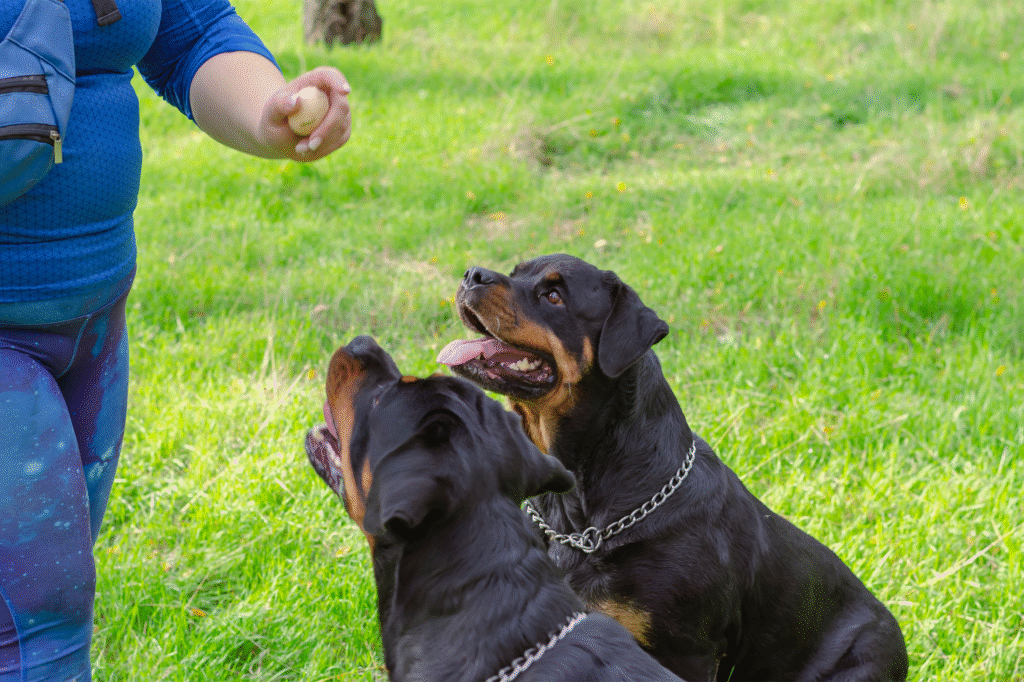A tiny change in your routine can boost your dog’s brain faster than you expect.

Most people focus on exercise and diet when thinking about their dog’s health, but mental sharpness often gets ignored. Dogs need mental workouts as much as physical ones, and the good news is it only takes minutes to see results. This habit is simple, fast, and can improve focus, confidence, and even obedience. If you have ever wondered how to sharpen your dog’s mind without spending hours training, here is your five-minute solution.
1. Hide-and-seek with favorite treats activates problem-solving skills.

As stated by the American Kennel Club, scent work is one of the best ways to mentally stimulate a dog because it taps into their strongest sense—their nose. Hiding treats behind a chair or under a small box engages natural hunting instincts and builds confidence.
Spending just five minutes each day encouraging your dog to “find it” can improve memory and focus. The habit helps reduce boredom, which often causes destructive behaviors, and deepens your bond as your dog learns to trust their ability to solve challenges. Even older dogs show sharper responses and improved energy when this habit becomes part of their routine.
2. Short bursts of clicker training sharpen attention.

According to research reported by Companion Animal Psychology, dogs trained with a clicker respond faster and retain commands better than those trained without it. Using a clicker paired with high-value rewards creates a fast feedback loop that strengthens cognitive connections.
Dedicating five minutes a day to reinforcing basic commands or teaching fun tricks like “touch” or “spin” keeps your dog’s brain active. This routine works for all ages and energy levels, helping shy dogs gain confidence and active dogs learn impulse control. The simplicity of this approach is what makes it so effective, as small consistent sessions often outperform long, exhausting training marathons.
3. Rotating puzzle toys increase memory and adaptability.

As discovered by researchers in the Journal of Veterinary Behavior, dogs given interactive puzzle toys develop stronger problem-solving skills and show improved frustration tolerance. Switching out different styles of puzzle toys prevents predictability and keeps mental challenges fresh.
A five-minute daily session with a food-dispensing puzzle is enough to exercise your dog’s focus and patience while reducing stress. This short habit prevents boredom-based chewing or barking while improving your dog’s ability to think through problems. Owners often notice better adaptability in unfamiliar situations because dogs learn that solving problems leads to rewards, boosting overall confidence and resilience.
4. Name recognition games improve communication skills.

Teaching your dog to associate names with toys builds memory and strengthens the bond between you and your dog. Pick one toy and name it, then encourage your dog to retrieve it from a small group of toys.
Daily five-minute sessions create impressive vocabulary skills over time. Some dogs can eventually recognize dozens of words, making everyday playtime feel more like a brain workout. The habit pays off by improving obedience and enriching play experiences, transforming ordinary moments into interactive training opportunities.
5. Rapid trick chains build mental flexibility.

Linking several known tricks together—like “sit,” then “down,” then “roll over”—in quick succession forces your dog to shift focus and think ahead. The mental coordination required enhances learning speed and concentration.
Even dogs who already know the tricks experience improved cognitive stamina when asked to chain commands quickly. These sessions are fun for both of you and create an almost game-like atmosphere where success feels like play instead of work. Over time, dogs tend to offer behaviors faster, anticipating cues and thinking more independently.
6. Impulse-control games increase patience and focus.

Simple routines like “wait” before eating or “leave it” when given a tempting treat teach dogs to control their impulses. Practicing this daily for a few minutes creates better household manners and strengthens cognitive control.
Dogs who learn patience also handle stressful or distracting situations more calmly. It is one of the most useful brain habits because it carries into everyday life, making walks, greetings, and feeding times smoother. This practice builds emotional regulation, which is essential for dogs living in busy households or urban environments.
7. Quick obedience refreshers prevent mental decline in seniors.

Aging dogs often experience cognitive decline, but reinforcing commands they already know can slow that process. Working through “sit,” “stay,” or “come” for just five minutes keeps their memory active.
This habit also provides physical movement without strain, perfect for senior dogs who need lower-intensity routines. Keeping their minds engaged daily helps them maintain confidence and reduces confusion or anxiety, improving quality of life. Many owners notice an overall boost in responsiveness and alertness just from these short, structured interactions.
8. Eye contact training strengthens focus on you.

Rewarding your dog for looking into your eyes on cue improves communication and trust. A simple “look at me” practice helps dogs focus even in distracting environments, which makes obedience and bonding stronger.
This is especially valuable for high-energy or anxious dogs because it centers their attention on you rather than surrounding distractions. Just a few minutes of practice per day leads to better recall and overall responsiveness, giving you a calmer and more connected companion.
9. Fast shape discrimination games challenge their memory.

Teaching dogs to differentiate between objects by shape or color creates mental challenges that go beyond basic obedience. It might involve two boxes with one holding a treat and rewarding the correct choice when they touch or point to it.
These games tap into problem-solving and memory simultaneously. When practiced consistently for a few minutes a day, dogs become more confident in using their brains to interpret new information. The result is a pet who not only listens well but also thinks independently, a valuable skill in any situation.
